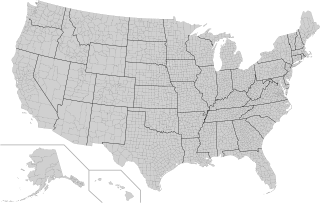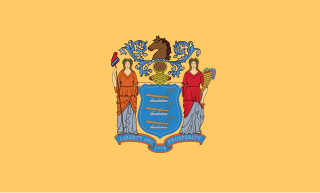A county board is a common form of county legislature, particular of counties in the United States.

A county is a geographical region of a country used for administrative or other purposes, in certain modern nations. The term is derived from the Old French conté or cunté denoting a jurisdiction under the sovereignty of a count (earl) or a viscount. The modern French is comté, and its equivalents in other languages are contea, contado, comtat, condado, Grafschaft, graafschap, Gau, etc..
A legislature is a deliberative assembly with the authority to make laws for a political entity such as a country or city. Legislatures form important parts of most governments; in the separation of powers model, they are often contrasted with the executive and judicial branches of government.

In the United States, an administrative or political subdivision of a state is a county, which is a region having specific boundaries and usually some level of governmental authority. The term "county" is used in 48 U.S. states, while Louisiana and Alaska have functionally equivalent subdivisions called parishes and boroughs respectively.
Related forms of county government include:
- Board of Supervisors — a form of county legislature in some U.S. states
- County commission, also called a board of county commissioners — a form of county administration in some U.S. states
- County council — a form of county legislature in some countries

A county commission is a group of elected officials charged with administering the county government in some states of the United States. County commissions are usually made up of three or more individuals. In some counties in Georgia however, a sole commissioner holds the authority of the commission.
A county council is the elected administrative body governing an area known as a county. This term has slightly different meanings in different countries.
Forms unique to a single state include:
- Police jury — the most common form of legislature in parishes of Louisiana
- Board of Chosen Freeholders — the county legislature in each county of New Jersey
- Fiscal court — Same in Kentucky

New Jersey is a state in the Mid-Atlantic region of the Northeastern United States. It is a peninsula, bordered on the north and east by the state of New York, particularly along the extent of the length of New York City on its western edge; on the east, southeast, and south by the Atlantic Ocean; on the west by the Delaware River and Pennsylvania; and on the southwest by the Delaware Bay and Delaware. New Jersey is the fourth-smallest state by area but the 11th-most populous, with 9 million residents as of 2017, and the most densely populated of the 50 U.S. states; its biggest city is Newark. New Jersey lies completely within the combined statistical areas of New York City and Philadelphia and was the second-wealthiest U.S. state by median household income as of 2017.

Kentucky, officially the Commonwealth of Kentucky, is a state located in the east south-central region of the United States. Although styled as the "State of Kentucky" in the law creating it, (because in Kentucky's first constitution, the name state was used) Kentucky is one of four U.S. states constituted as a commonwealth. Originally a part of Virginia, in 1792 Kentucky became the 15th state to join the Union. Kentucky is the 37th most extensive and the 26th most populous of the 50 United States.




